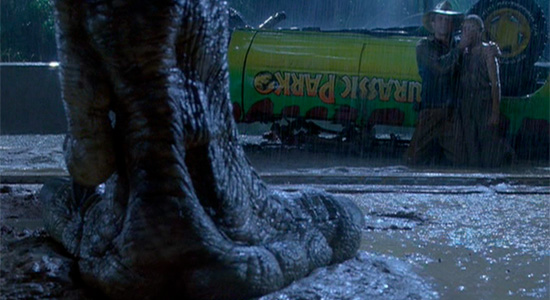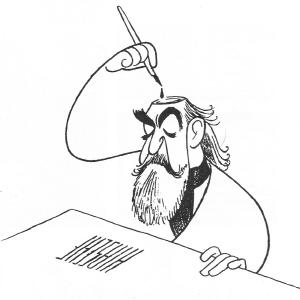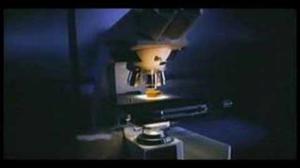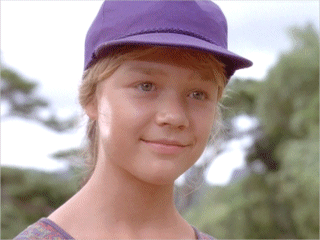
The latter date is more memorable to people of my generation: the release date of Steven Spielberg’s adaptation of Michael Crichton’s high-concept novel Jurassic Park. That day is one I can remember at a second’s notice for the disappointment I felt, but I have an even cannier memory of the Sunday before, when hope still sprang eternal. Unlike most kids in North Tonawanda, the small town near Buffalo, New York where I grew up, I did not attend church on Sundays, or any day of the week. By the time I entered the world in 1984, my Jewish-raised father and Catholic-raised mother decided organized religion wasn’t for them, and I’ve never felt different. Outside of purely secular Christmas and Hanukkah celebrations, there’s been no religion in my house, nothing I’ve held so high except cinema. Pretentious though it may sound, my sanctuary is, and has always been, film.
Sundays represented a different routine for an only child like me. If it was autumn, my parents and I might spend the afternoon watching a Buffalo Bills game on either WIVB, the local CBS affiliate, or WUTV, the Fox affiliate. In the spring, we’d flip to CBC, one of two Canadian networks we got because of how close we were to the border, to watch a Toronto Blue Jays game. (My father being from Brooklyn, we’re die-hard New York Mets fans, but Blue Jays games were always on, whereas Mets games were a priceless commodity.) Those were, like our afternoon visits to Dairy Queen in the summer, seasonal amenities to middle-class life in Western New York. Our Sunday morning routine, however, was static. These idyllic hours would begin with Dunkin’ Donuts apple fritters, orange juice, and me reading new Calvin and Hobbes and The Far Side strips over and over in the local newspaper, taking in the intricate dialogue and artwork from Bill Watterson and Gary Larson. They ended with my dad and I going to a local volunteer radio station that functioned as a reading service for the blind, so he could co-anchor, as it were, the Sunday Buffalo News and I could get out of my mom’s hair for a couple hours. Somewhere in between, I’d read the Sunday edition of The New York Times.
OK, I’d skim the Arts & Leisure section. Many times, I tried to read through the Magazine or Week in Review, just as I tried to grasp Garry Trudeau’s political satire in Doonesbury, because I wanted to cultivate an aura of being well-read, which went over phenomenally with my third-grade class. Granted, every once in a while, the Arts & Leisure section would feature a profile of some director or actor I liked, but what I was most entranced by were the full-page movie posters littered throughout its pages. The Buffalo News wasn’t a bad publication—it’s there that I first started writing movie reviews, in their teen-oriented weekly magazine, so you can thank/blame them—but it wasn’t extensive in its film coverage, nowhere as much as the Grey Lady. And back in 1993, movies’ MPAA ratings weren’t easily accessible like they are now, common knowledge released months prior to release on the Internet. This is why the Sunday Times was so important: that was when, failing ads on TV, I could find out what movies were rated, and thus, what movies I could see in theaters.
Perusing the Arts & Leisure section was like peering into a store window and looking at a cool new toy I wanted more than anything, but would not get for a very long time. My parents weren’t so poor that we didn’t go to the movies; they simply wouldn’t let me see anything above a PG until I was older. I was rare in my community in being restricted from seeing such movies, which may say something about the quality of parenting in my neighborhood. Certainly, my mother and father weren’t so strict that I didn’t get to see my first R-rated movie until I was 17. They did, though, insist on vetting said film—Air Force One, in the summer of 1997—before I saw it in theaters. I don’t remember what the first PG-13 movie I saw was, but before I turned 13, they were few and far between. (My mother, in particular, was so concerned about the content I watched that she nearly barred me from watching The West Wing when it premiered in the fall of 1999 because it was rated TV-14. I won out, probably because I was 15.)
I was jealous when the boys in my second-grade class bragged about seeing Terminator 2: Judgment Day in the summer of 1991. Why did I have to be the odd one out? How could my parents bar me from seeing what everyone else did? I’ve got a terribly selfish, arrogant streak, so I’ve held onto this frustration because I felt like—unless someone in my class hid it excellently—the only child-sized movie buff in my town; it hurt more to not be there for a groundbreaking moment in cinema. Inherently, I knew I’d rarely get my parents to give on a movie or TV show that wasn’t, as they say in The Hudsucker Proxy, y’know…for kids! (The Hudsucker Proxy, rated PG, is the first Coens film I saw. Suffice to say, almost all of it, stunning production design and speedy chatter aside, went over my laughably naïve, 10-year old head.) My desire to watch more than I was allowed never went away—my imagination was inflamed by that which I could not have, especially when something tapped directly into my cerebral cortex, such as Jurassic Park.
I don’t remember which movie I saw at the 1992 Christmas season with a Jurassic Park teaser attached, but boy, do I remember that teaser. The foreboding music and dark setting of the apparently-unattended laboratory, as well as the intelligent-sounding if ominous narration sent me into a tizzy. Oh, and it was a Steven Spielberg movie about dinosaurs. That helped. I didn’t know Sam Neill, Laura Dern, Jeff Goldblum, or Richard Attenborough from movies like Dead Calm, Blue Velvet, The Fly, or Gandhi, outside of my endless scouring of the yearly Leonard Maltin movie guides. But Spielberg plus dinosaurs was all I needed to know to want to see Jurassic Park as badly as anything in the universe. Even though I’d only seen, maybe, a few of his movies by 1993, he was as close to a hero as I had in the film world, the nebulous exemplar of what I dreamt of being.
I wanted to be in pictures as soon as I knew they existed, roughly when I was four years old, getting the bejeezus scared out of me by the nefarious Judge Doom in Who Framed Roger Rabbit. (Why my parents let me see that film in 1988, in theaters, is beyond me.) First, I wanted to act. Then, when I learned of Spielberg’s creative heft and power, I wanted to direct. After I watched Annie Hall, I realized that I could direct, write, AND act! All at once! The possibilities were infinite. But the closest I could get as a kid was watching as many movies as I could. I wanted to be transported to other worlds, to be like the people in these worlds, believing that such experiences could help me one day make worlds like them. The world of movies was a stereotype based in truth: one of remarkable fantasy, an endless landscape of the impossible brought to life.
And what better example of the impossible is there than Jurassic Park? From the teaser, the movie looked like the result of all those goofy scenarios I’d come up with when playing with my toys suddenly being projected on a 60×40 screen. I had to see Jurassic Park. There was no alternative. Except, of course, there was, as my parents told me they wouldn’t let me see it if it was rated PG-13. They did not need to tell me what would happen if the film was rated R. Because my TV time was limited, I didn’t know what Jurassic Park was rated until that fateful Sunday, June 6th. I woke up and, after getting dressed, remembered the importance of the day. I dashed downstairs, bypassing Calvin, Hobbes, and the Far Side oddballs, grabbing the Arts & Leisure section like it was the wrapping paper on the last Christmas present. I found the full-page ad for Jurassic Park, a skeletal, silhouetted T-Rex reaching right off the page with its claws. My eyes swooped to the bottom, past the credits to the….PG-13 rating. I was crestfallen, and unable to convince my parents to change their minds. It also didn’t help matters that Spielberg said that he wouldn’t let his kids, who were older than me but under 13, see the film yet. Never have I more felt like Ralphie in A Christmas Story, but at least he got the Red Ryder. Of course, in the grand scheme of things, an 8-year old going on 9 not being able to see a big-budget dinosaur movie is hilariously insignificant. I was, though, not old enough to appreciate that the world didn’t revolve around me, so I was only bitter toward my classmates, all of whom saw Jurassic Park over and over that summer.
Jurassic Park, like many of Spielberg’s best films, allows us to be children again, even if this is, ironically, a film most kids would be scared to death by. It’s a movie that indulges in horror-movie tropes while making them feel fresh, layering a patina of intelligence over the intense, earth-rattling action. Though the human-dinosaur face-offs are the stuff of movie legend, the early sections where Drs. Alan Grant, Ian Malcolm, and Ellie Sattler debate the ethics of a theme park full of the living, breathing extinct are strangely fascinating and entertaining, at least to 28-year old me. Nine-year old me just wanted to get to the T-Rex, but that’s one of the joys of returning to Jurassic Park—this holds up on repeat viewings, Spielberg being wise enough to tap into a primal urge audiences have to be dazzled and scared without being treated idiotically.
When I first heard that Universal Pictures would post-convert Jurassic Park to 3D to commemorate its 20th anniversary this year, I was conflicted. Hollywood loves to follow the wrong trends, 3D one of the more recent and aggravating. After Jurassic Park opened to amazing box-office totals, the lesson the industry learned is that, with movies like this and T2, people love cutting-edge special effects. And there’s no question that when the special effects look as pristine as they do in these movies—somehow, inexplicably, Jurassic Park has special effects that still look more seamless than those in almost every other movie in the following two decades—audiences go crazy. But it’s not often that we get a modern blockbuster boasting near-perfect VFX and a story surrounding those visuals that audiences remember and almost immediately consider iconography. Oh, sure, everyone knows the shot of the T-Rex’s foot slamming down onto the muddy ground in front of a Ford Explorer, facing down Dr. Grant and John Hammond’s granddaughter Lex. Equally memorable, however, is Goldblum’s wry, offbeat performance as Ian Malcolm, as smart as the other leads, despite choosing to come to an island filled with man-eating dinosaurs, but gifted with a wicked sense of humor. His dialogue and delivery are still enormously funny—“That is one big pile of shit” among the biggest laughs—and, this can’t be said enough, the fact that he’s not a total moron helps. (Goldblum’s innate intelligence is the sole element that makes The Lost World remotely tolerable.) Jurassic Park is only a couple of steps removed from being a legitimate horror film, separated from the genre partly because its characters feel like humans, not stick figures for screenwriters Crichton and David Koepp to fiddle with.
Of course, it’s the special effects people think of first. My fear, specific to the upconversion, was that the 3D treatment would ruin the quality of the images, dilute the brightness (and in a movie with a good number of scenes set in the dark or in dim places), and otherwise mar what should be a stunning moviegoing experience. I was loathe to spend any time or money on encouraging Hollywood to keep re-releasing old films with new bells and whistles. The flip side was that…well, of course I was going to see Jurassic Park in 3D. I can’t hold onto that childhood memory and act inappropriately melodramatic about it without seeing the damn thing on the big screen once and for all. In an ideal world, Universal Pictures would’ve known or believed that they could re-release this movie without adding 3D. Such a world doesn’t exist, so I had to suck it up and sit down to not only see this in 3D, but in IMAX. (This was one of the many feared and disliked “LieMAX” theaters, as some call them, theaters with the IMAX brand but not a seven-story screen, just one that’s slightly larger than average.)
And guess what? Even in 3D, Jurassic Park is one of the best blockbusters of the last 25 years. Most of Spielberg’s instincts, for better or worse, are on display here. His knack for crafting taut, suspenseful setpieces like the initial T-Rex attack, as well as the climactic scene where two velociraptors stalk Tim and Lex in the Visitors’ Center kitchen, is unparalleled. His sentimental streak is in full view, what with the subplot with Dr. Grant slowly warming to the notion of having kids by going to hell and back with Tim and Lex, and coming out clean on the other side. And sure, it’s laid on a bit thick, especially with Tim’s treacly dinosaur jokes as the trio relax on a treetop surrounded by “veggie-sauruses,” as Lex defines them. Lex, on the whole, is the closest the film gets to showing its age. Yes, seeing Wayne Knight, at his Newmanic height, parry with a younger Samuel L. Jackson reminds you this movie isn’t totally timeless. Lex, though, with her goofy declaration that she’s not a nerd, she’s a hacker—despite not understanding the difference between carnivores and herbivores—is dated all the way to her Day-Glo baseball cap.
So Jurassic Park is dated. So is every great film if you look for the proverbial rings around its stump. I laugh when Lex says she’s a hacker, but not in mocking. That adds to the film’s charm. On the silver screen, what I find most thrilling is that the dream I had has finally been realized. In the opening scene, as game hunter Robert Muldoon oversees the transfer of a raptor to its enclosure before it viciously kills a gatekeeper, I left behind the vagaries of the real world. I was no longer sitting in a packed LieMAX theater. I was inside this movie. The close-up of Muldoon’s mouth, shouting “Shoot her!” frantically if authoritatively, was the rabbit hole, and I was Alice, tumbling into its gaping maw. The experience of seeing this movie with a crowd who is totally aware and respectful of its mammoth power is something you just can’t get at home. I didn’t need to worry about being sucked back into our world by loud kids, people on cell phones, or chatty neighbors. None of us were there. We were all back in Jurassic Park. We were right there with Ian Malcolm, blithely telling Muldoon, “Must go faster,” to outrun a rampant T-Rex. We ran with Alan Grant, Tim and Lex, attempting to not get run down by a herd of flocking Gallimimus. And we were breathless with Tim and Lex as they desperately tried to get away from those raptors.
Jurassic Park is Steven Spielberg at his best, a movie made by a man who understands and wields the all-encompassing power of cinema. So much of the story is about regular people—intelligent, and at the top of their game, but still fairly average people—being tossed into, essentially, a movie. The centerpiece of the film, still its very best scene, is when the Tyrannosaurus Rex breaks free from its enclosure and attacks Tim and Lex in their Ford Explorer after the cartoonish lawyer Donald Gennaro ran in fear to a nearby bathroom. (It’s been said before, but man, Spielberg must’ve hated lawyers something terrible when making this movie.) What struck me this time is that, for a good chunk of the sequence, we are not the only ones watching the terror unfold. There’s a voyeuristic streak laced with a chaser of control throughout—Hammond, Muldoon, and others watch and help navigate the failed tour—most disquieting as Grant and Malcolm sit in their Explorer, paralyzed and initially helpless, just watching. Jurassic Park is packed with scenes where someone is trying to gain or maintain control despite their physical separation from those they wish to dominate: Dennis Nedry wheedling his way onto a ship to the mainland, Hammond and Malcolm bickering over who can lead Ellie to a power grid quicker, that first tour around the park, and on and on. There are also a handful of scenes where these characters, so sure of their power, attempt to break the seal, to break the fourth wall, as when the scientists escape from the introductory video explaining how these dinosaurs were created to interact with those people working behind the glass. These are characters who want control, unable to contain their curiosity, thus creating chaos.
Jurassic Park is perfectly controlled chaos, a monumental undertaking that could’ve failed so many different ways, but is confidently told through a literate, witty script; a vigorously charming ensemble; and incredible special effects. Everything holds up after 20 years, to the point where it’s tempting to consider this Spielberg’s best film. (I’ll still put Raiders of the Lost Ark above it, but this one’s my favorite among his immense filmography.) His hand is so assured, and he’s able to balance the violence with a generosity of spirit. Tim and Lex, in particular, get put through the ringer here, but as performed by Joseph Mazzello and Ariana Richards and written in such an upbeat way, they’re scared but never truly wilt in the face of danger. Perhaps Hammond, the Steven Spielberg facsimile within the movie as much as a Walt Disney avatar, an eternal, oblivious showman, deserves more than what he gets; he’s lost his park at the end, but he’s still rich and never once gets attacked or harmed. The well-meaning audience within the movie is punished for their curiosity in more physical ways than the illusionist, a disturbing choice, but weirdly appropriate. We want movies to thrill and frighten us; our curiosity is as deserving of being questioned and punished, if not more so, than the people making those thrilling and frightening pieces of cinema. Jurassic Park is a quintessential thrill ride of a movie, concurrently scary and delightful.
Regarding the 3D, it’s saying something that Jurassic Park continues to work so viscerally even with an extra layer of distance. With the exception of one moment near the very end, nothing in this movie is enhanced in the third dimension. But nothing is ruined. If you’re like me, someone who’s managed to never see this on the big screen, and you have no other options (or there are no 2D screenings in your area), then…well, like me, you should bite the bullet and don the 3D glasses. Like most new movies presented in 3D despite not being shot with 3D cameras, the 3D upconversion of Jurassic Park could be worse. The difference is that most new movies aren’t Jurassic Park, so technologically forward-thinking that not even 3D can bring it down.
Some part of me wishes, even now, that I’d seen Jurassic Park on the big screen in June of 1993. The event would’ve stuck with me, even if I’ve come to appreciate the film more consciously now, something I’d have failed at when I was 8 years old. If nothing else, I could’ve been there at the beginning. The concept of going to the movies has so drastically shifted in the last two decades, as the advent of the Internet has made it difficult to have a relatively untainted experience, unless you avoid social media entirely and see a movie the day it opens. But 20 years after the fact, Jurassic Park is an immensely rewarding film, a poster boy for the popcorn movie at its greatest. Its adventurous, inquisitive, shrewd sensibility still shines through amidst the attacks.
Jurassic Park is, following in the steps of our most impressive entertainments, a grand illusion, a movie very much about normal people entering into a wild, outlandish scenario that only feels real once blood is spilled. Alan Grant, Ian Malcolm, Ellie Sattler are us, thrown into the unreal and told to fight for their lives against a force they thought they knew from a distance. This trio knows more about paleontology, climatology, and mathematics, respectively, than we may, but when they’re facing down a T-Rex, PhDs don’t matter. All that matters is if their survival instinct is well-honed. With this movie, we learn how a normal person would react when faced with the monsters from our childhoods, unable to wake from some sweaty nightmare. Where Jurassic Park has not flagged is in its almost primitive power, its ability to play the audience like a fiddle. All the way down to the Spielberg look, this is chockablock with his auteurist touches. We often hear about this fabled stare, something akin to a Kubrickian stare, but with far less menacing overtones. The awestruck hero or heroine stares upwards at something marvelous and unspeakably beautiful, as the camera zooms in at a low angle on their wide-open face. Many such wonderstruck faces can be found in Jurassic Park, but none of us can see the most important: our own.
When we see Sam Neill staring in disbelief at Brontosauruses nibbling on the leaves of tall trees, he serves as our entrée into the unbelievable. We’re next to him, unable to process the beauty and unpredictability of what we’re looking at. Ian Malcolm may be shocked to his core in a rainy off-road vehicle, watching a T-Rex terrorize two helpless kids, but that’s us, unable to react, scared of the definitively impossible. In the first half of the film, the adults subtly wield their superiority over Tim and Lex, but as soon as those dinos actually arrive to wreak havoc, everyone is reduced to an elemental state. When faced with the stuff of our nightmares, we are children, looking up at the frightening and inexplicably glorious, as if in the front row of a movie theater, dumbstruck with wonderment.
I do not know if I’d have survived seeing Jurassic Park as a kid in theaters, dwarfed by immense imagery spawned from my imagination. And I do feel a bit bittersweet that, like Raiders of the Lost Ark, I’ve only now seen the film in a format it wasn’t intended to be presented in. But I have seen Jurassic Park on the big screen now, and it’s a memory I can cherish for years to come. My life has been shaped by movies, a dizzying world that never fails to dazzle me. A darkened movie theater has always been my sanctuary, a place to pause my life and let invention wash over me. Not every movie is so transporting, not every world within so inviting, but cinema at its best is the kind of immersive I have always longed for. I want each movie to whisk me away, to put me on the other side of the screen. Jurassic Park, on any screen, is among the most immersive cinematic experiences I’ve ever had. Now, at long last, my childhood has one less gap to fill.
– Josh Spiegel








